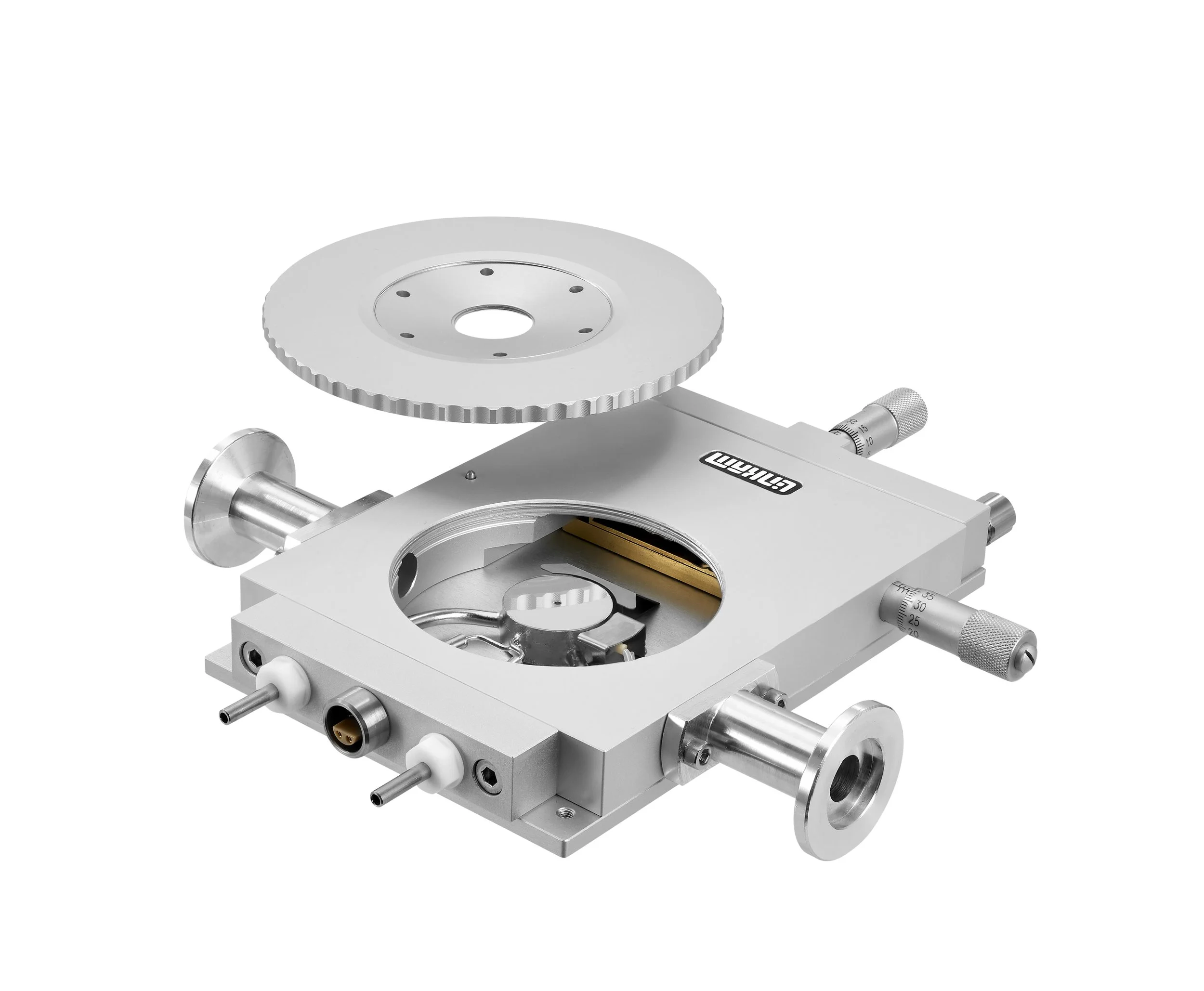Read how a unique setup using Linkam’s TS1500 allows researchers to perform beamline XRD analysis at high temperature at Diamond Light Source. Here, they use the new long-duration experimental beamline I11 to study phase formation kinetics of metal alloys, demonstrating a new technique for metallurgical studies.
Flow-induced crystallisation of polymers from aqueous solution using Linkam’s CSS450
Researchers used Linkam’s CSS450 to replicate the mechanical properties of natural silk by creating a synthetic polymer that solidifies when subject to flow. Using temperature-controlled shear in the aqueous phase they induce polymer crystallisation, providing an alternative low-energy polymer processing route.
Structure and Properties of Silica Glass Densified in Cold Compression and Hot Compression
Researchers used Linkam’s high temperature TS1500 stage to quench silica glass from 1100°C, studying the resulting mechanical properties of the glass in order to understand the effects of heating, quenching and compression on the properties of glass.
Phase stability frustration on ultra-nanosized anatase TiO₂
Researchers looked at the phase stability of nanocrystalline TiO₂ at temperatures up to 1000°C using Linkam’s high temperature TS1500 stage.
Inorganic Nanotube Mesophases Enable Strong Self-Healing Fibres
Elastic response of (1−x)Ba(Ti0.8Zr0.2)O3 – x(Ba0.7Ca0.3)TiO3 (x=0.45–0.55) and the role of the intermediate orthorhombic phase in enhancing the piezoelectric coupling using Linkam’s HFS600E-PB4
Researchers used Linkam’s HFS600E-PB4 probe stage at temperatures down to -70 °C (200K), to investigate how temperature-dependent phase transitions affect the properties of piezoelectric materials, finding that ideal properties peaked around the low-temperature phase transitions.
Optothermotronic effect as an ultrasensitive thermal sensing technology for solid-state electronics using Linkam’s HFS600E-PB4.
Researchers study the effect of thermal excitation on semiconducting sensor materials using a Linkam probe stage, the HFS600E-PB4. They explore the temperature sensing performance of these semiconductor nanofilms.
Vertical Interface Induced Dielectric Relaxation in Nanocomposite (BaTiO3)1-x:(Sm2O3)x Thin Films using Linkam’s HFS600E-PB4
Researchers use a Linkam probe stage, the HFS600E-PB4 to study the relationship between vertical interfaces and dielectric properties in thin nanocomposite films.
Submillisecond-response nematic liquid crystals for augmented reality displays
Researchers use Linkam’s Liquid Crystal System to study nematic liquid crystals for augmented reality displays.
Electrically driven three-dimensional solitary waves as director bullets in nematic liquid crystals
Researchers use Linkam’s Liquid Crystal System to study nematic liquid crystals.
Multi-level chirality in liquid crystals formed by achiral molecules
Researchers use Linkam’s Liquid Crystal System to study the chirality of liquid crystals.
An Experimental Study of the Formation of Talc through CaMg(CO3)2–SiO2–H2O Interaction at 100–200∘C and Vapor-Saturation Pressures using Linkam’s CAP500
Researchers used Linkam’s CAP500 with fused silica capillaries to study the formation of talc, observing the process using techniques including Raman spectroscopy and X-ray diffraction.
Study of SO2/water and NO/water/salt systems from 25 to 150 °C using fused silica capillaries, batch autoclave and Raman microspectrometry using Linkam’s CAP500
Researchers used the Linkam CAP500 to study the thermodynamic behaviour of CO2 capture systems, using fused silica capillaries under Raman spectroscopy.
Using Linkam’s mechanical testing system to investigate the reductive dissolution of supergrowth carbon nanotubes for tougher nanocomposites by reactive coagulation spinning
Researchers used Linkam’s TST350, now MFS to image and measure the tensile properties of nanocomposite samples synthesised by coagulation spinning using carbon nanotubes.
X-ray tomography of cryopreserved human prostate cancer cells: mitochondrial targeting by an organoiridium photosensitiser
Researchers used the Linkam CMS196 for imaging cryopreserved human prostate cancer cells with X-ray tomography.
Imaging endosomes and autophagosomes in whole mammalian cells using correlative cryo-fluorescence and cryo-soft X-ray microscopy (cryo-CLXM)
Scientists at the The Institute of Cancer Research in London, UK used Linkam’s CMS196 to image mammalian cells with cryo-CLXM microscopy.
Imaging of Vitrified Biological Specimens by Confocal Cryo Fluorescence Microscopy and Cryo FIB /SEM Tomography
Researchers used Linkam’s CMS196 as part of a Confocal Cryo Fluorescence Microscopy setup to image vitrified biological samples.
Key composition optimisation of meat processed protein source by vacuum freeze-drying technology using Linkam’s FDCS196
Effect of supercooling and cell volume on intracellular ice formation using Linkam’s FDCS196
Studying the effect of supercooling and cell volume on intracellular ice formation (IIF), using Linkam’s Freeze Drying system the FDCS196.
Using Linkam’s FDCS196 to Investigate How Small Molecule Ice Recrystallisation Inhibitors Enable Freezing of Human Red Blood Cells with Reduced Glycerol Concentrations
Researchers at the University of Ottowa, Canada used Linkam’s Freeze Drying system, the FDCS196 to cryopreserve red blood cells with slow cooling rates prior to storage at -80°C.

